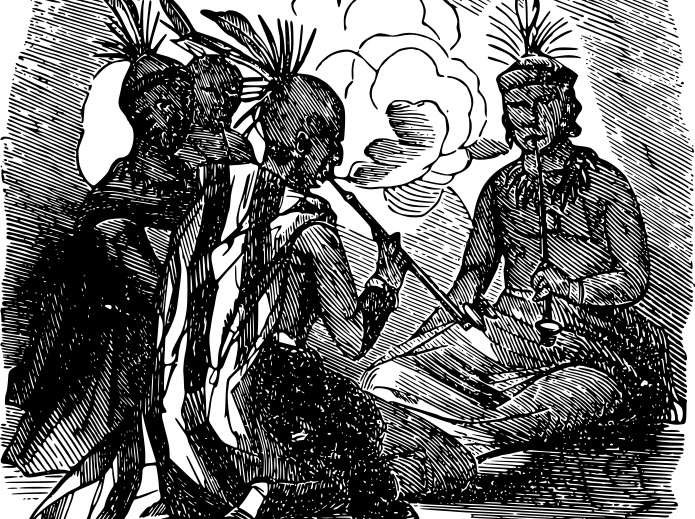SCORES & OUTDOORS: Was this past October the warmest on record?

 by Roland D. Hallee
by Roland D. Hallee
The question has been asked: Was this past October the warmest on record?
To come to any conclusion, I did much research and came up with the same answer everywhere I went looking. October 2022 was the warmest October on record.
“October 2022 is definitely set to be by far the hottest October ever on record,” said Christine Berne, a climatologist. “It will ‘probably beat’ the last record in 2001 by 1°C. We could hardly believe it at first,” said the scientist. The temperatures recorded are very rare for the season. Her report was made prior to the beginning of November.
Also, according to CNN, as we rolled into November, scientists discovered last month was the warmest October on record globally.
The European Union’s Copernicus Climate Change Service, which analyzes temperature data from around the planet, said October 2019 was the warmest in their data record, until this year, which goes back to 1979.
Globally, October was 0.69 degrees Celsius (1.24 degrees Fahrenheit) warmer than the average of all the Octobers in the 30-year span from 1981-2010, Copernicus said in its report. Last month narrowly edged out the previous record for October, set in 2015, by only 0.01 degrees Celsius (0.018 degrees Fahrenheit).
“Temperatures were much above average in large parts of the Arctic, while much of western USA and Canada experienced much below average temperatures,” the report said.
This year has seen multiple other hottest-month records, including July, which Copernicus said was the warmest month of all on record, replacing the record set in July 2016. Every month in 2019 has ranked among the four warmest for the month in question.
According to Copernicus, 2016 through 2018 have been the three warmest calendar years on record.
Monthly temperatures over the past 12 months have averaged close to 1.2 degrees Celsius (2.16 degrees Fahrenheit) over pre-industrial levels, Copernicus said. A report from the Intergovernmental Panel on Climate Change in November 2018 warned of impacts to climate and weather if warming exceeds 1.5 degrees Celsius (2.7 degrees Fahrenheit) over pre-industrial levels.
This recent report came the same day more than 11,000 researchers from around the world issued a grim warning of the “untold suffering” that will be caused by climate change if humanity doesn’t change its ways.
Copernicus assesses that since the 1970s the overall average rate of warming of the world is around 0.18 degrees Celsius (0.32 degrees Fahrenheit) per decade.
CNN’s Emma Tobin, Ivana Kottasová and Isabelle Gerretsen contributed to this report.
The frightening part to all of this is that the warmest seven years have all been since 2015 (do the math); the top three being 2016, 2019 and 2020. An exceptionally strong El Niño event occurred in 2016, which contributed to record global average warming.
With the weather being so warm, does this qualify as an Indian Summer?
According to the definition, the answer is a clear “yes”!
An Indian summer is a period of unseasonably warm, dry weather that sometimes occurs in autumn in temperate regions of the northern hemisphere. Several references describe a true Indian summer as not occurring until after the first frost, which we have had.
Weather historian William R. Deedler wrote that “Indian summer” can be defined as “any spell of warm, quiet, hazy weather that may occur in October or November,” though he noted that he “was surprised to read that Indian Summers have been given credit for warm spells as late as December and January.” Deedler also noted that some writers use Indian summer in reference to the weather in only New England, “while others have stated it happens over most of the United States, even along the Pacific coast.
Why Indian? Well, no one knows but, as is commonplace when no one knows, many people have guessed.
Some say it was from the prairie fires deliberately set by Indian tribes; from raids on European settlements by Indian war parties, which usually ended in autumn; or, in parallel with other Indian terms, it implied a belief in Indian falsity and untrustworthiness and that an Indian summer was a substitute copy of the real thing.
But my grandfather, who could spin a yarn with the best of them, had the best I’ve ever heard.
It seems an Indian chief was concerned about a hunting party that was delayed in returning from a late summer gathering of meat for the winter. The year had been an extremely difficult one and the tribe needed the buffalo, deer and turkey meat for their winter consumption, and the hides for clothing and shelters. Fearing the crops in the fields would go to waste before the braves returned to harvest, the chief sat at his campfire and began to feverishly smoke a pipe, and did so for days, until the air was filled with smokey, hot air. Once the hunting party made its return, the air was still warm enough to gather the crops that had not been damaged by frost, that the chief feared would be destroyed by the impending cold weather. By warming the air with the smoke from his pipe, the chief, essentially, saved the crops.
There is a lot to think about here.
Roland’s trivia question of the week:
Who is the New England Patriots’ all-time single season leader in touchdown receptions?
Responsible journalism is hard work!
It is also expensive!
If you enjoy reading The Town Line and the good news we bring you each week, would you consider a donation to help us continue the work we’re doing?
The Town Line is a 501(c)(3) nonprofit private foundation, and all donations are tax deductible under the Internal Revenue Service code.
To help, please visit our online donation page or mail a check payable to The Town Line, PO Box 89, South China, ME 04358. Your contribution is appreciated!


Leave a Reply
Want to join the discussion?Feel free to contribute!